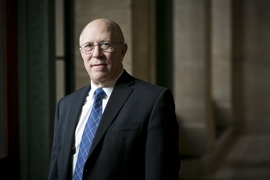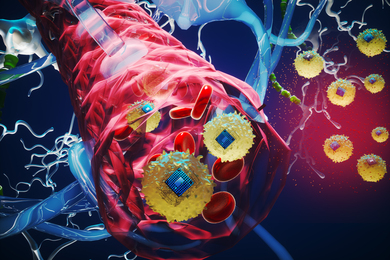John Charles joined MIT as vice president for information systems and technology (IS&T) in January 2014. In this role, Charles is responsible for leading the IS&T organization in implementing a shared technology vision — crafted together with faculty, staff, and students — in support of MIT’s education, research, and administrative programs. Charles recently discussed his vision for IS&T with MIT News, explaining how IS&T is transforming itself to better meet the needs of the MIT community.
Q. What is your vision for the future of IS&T, and how is the organization transforming itself to support this vision?
A. The 21st-century IT context has changed, and IS&T has had difficulty keeping up with the current pace of innovation and change. My vision is to enable the organization to better meet the needs of our faculty, staff, and students for IT systems and services. We are now experimenting with a new, agile operating model that is allowing us to accelerate the pace of IT-enabled innovation at MIT.
This practice of agile, iterative experimentation — think big, start small, fail fast, iterate rapidly — is key to enabling innovation. This new way of working together allows us to quickly gather the collective knowledge and points-of-view of cross-functional teams, and successfully incorporate input during system development.
While working to modernize the systems that widely support MIT’s administrative services and educational enterprise, we also want to enable the MIT community to innovate IT services in response to its diverse and specialized needs. I believe these two complementary approaches will allow IS&T to better meet the needs of our community.
We are now determining how to best package IT services so that it will be intuitive for community members to access needed services and support. We want faculty to be able to easily and securely leverage open application programming interfaces [APIs] to create new systems and platforms for teaching and research; students to easily and securely create new applications; and staff members to feel better supported while also being able to create new applications that address specific needs. [More information about recent proof-of-concept projects can be found here.]
So that IS&T will have greater capacity for supporting innovation and be better equipped to keep pace with rapidly evolving Institute needs, we are restructuring our teams into three capability groupings: “Emerging Solutions,” “Enabling Services,” and “Planning and Administration.”
The Emerging Solutions group will collaborate with teams across MIT to develop new systems solutions, employing holistic and integrated approaches to innovating administrative and student systems. Our current director of education systems, Eamon Kearns, will have an expanded role overseeing development of administrative systems as well as education systems.
The Enabling Services group will be responsible for rapid deployment of new IT services, and for ongoing operations and security of all IT systems and services. Our current director of operations and infrastructure, Mark Silis, will lead these efforts, overseeing all infrastructure, continuing operations, customer support services, and security resiliency.
The Planning and Administration group will provide project- and portfolio-management and support services, workforce planning, and financial and administrative support services for the Emerging Solutions and Enabling Services groups. Our current director of administration for IS&T, Diana Hughes, will lead this group.
The Information Technology Governance Committee will guide us as we move forward to enhance our services and capabilities, and to ensure that our priorities support MIT’s mission in the best way possible.
Q. What is the process you have followed to assess the Institute’s needs for IT services, and how will the new IS&T operating model enable the organization to meet the community’s evolving needs?
A. When I first joined MIT a year ago, I reviewed the comments, findings, and recommendations outlined in the 2012 IS&T Advisory Council report, as well as the IT@MIT working group report of the 2009 Institute-wide Planning Task Force. My review revealed a set of common themes clustered around the Institute’s need to increase agility for systems development for academic departments, research laboratories, and centers, as well as for administrative units; modernize and advance business-process excellence; and enable innovation for MIT’s community.
These themes were validated through a listening tour, which included meetings with IT governance and advisory committees, key stakeholders within the faculty and administration, and the Institute’s IT leaders group.
The new IS&T operating model is explicitly designed to:
- embrace API-centric architectures that will enable IS&T and other IT service providers to quickly respond to requests to extend the functionality of key Institute systems to meet differentiated needs;
- incorporate the use of emerging data visualization and predictive analytics tools that will better enable us to keep pace with rapidly evolving needs for real-time access to structured and unstructured Institute data; and
- break down existing barriers to integration and improve support for cloud-based services.
Q. What kinds of services and technologies are you exploring for future use at MIT, and how will these new solutions support innovation at MIT?
A. Collectively, we are working to employ a suite of new solutions and services to significantly enhance support for innovation and the “maker” culture of MIT. We want to enable faculty, students, and staff to quickly build new applications that sit on top of existing computation, storage, security, and integration platforms without having to replicate those lower layers of the technology stack. We want to open safe and secure access to Institute data so that we can leverage real-time access to data to inform decision-making, and nurture the use of application and API repositories for code-sharing.
Most importantly, the new operating model enables teams working to develop innovative systems and solutions to hand off operational support responsibilities for new services deployed at scale — thereby freeing up the teams to focus on the next rounds of innovation.










